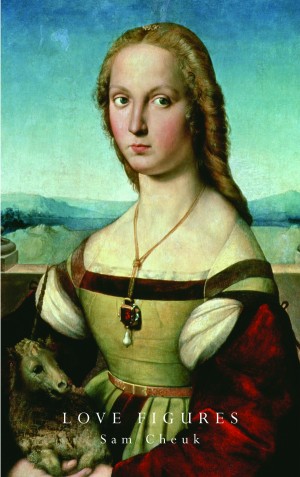Book Review: Sam Cheuk’s Love Figures
Natalie Zina WalschotsWebsite@NatalieZed
 There is a unicorn on the cover of this book. This book is like a book with a unicorn on the cover. This book is like a unicorn, like something mythical and beautiful that has to disappoint, either by its non-existence or the drab ordinariness it must assume in order to exist. This book is like a unicorn, and it is like love.
There is a unicorn on the cover of this book. This book is like a book with a unicorn on the cover. This book is like a unicorn, like something mythical and beautiful that has to disappoint, either by its non-existence or the drab ordinariness it must assume in order to exist. This book is like a unicorn, and it is like love.
The first section in Sam Cheuk’s Love Figures, “Punctum,” is the strongest. Punctum is a term Roland Barthes developed in Camera Lucida for a photographic detail that produces a personal emotional response, even a sort of pain, that connects the viewer to the subject: it’s his counterpoint to “studium,” a photograph’s cultural, political, social context. The focus of this section is in the wounding, the way parents hurt children when they are young, and how those children redirect that hurt back on them as they grow older. It mercilessly explores the way people hurt themselves with memories, cutting themselves until the blades are dull and smooth as pearls. “Punctum” discusses deaths, small and large, sudden drops from great heights or slow wastings in hospitals.
But like anyone uncertain and in love, Love Figures apologizes for itself too much. The titular section, “Love Figures,” begins with an explanation of the trouble with love poems—they open the writer up to the pitiless gaze of the panopticon, in hope that the object of one’s affections is among the observers—and then writes them anyway. I can’t help but read them all through that lens of critique, with an eyebrow raised to all the tenderness. Love here is stilted and apologetic. Throughout the book, it is the anger that hits home more than love.